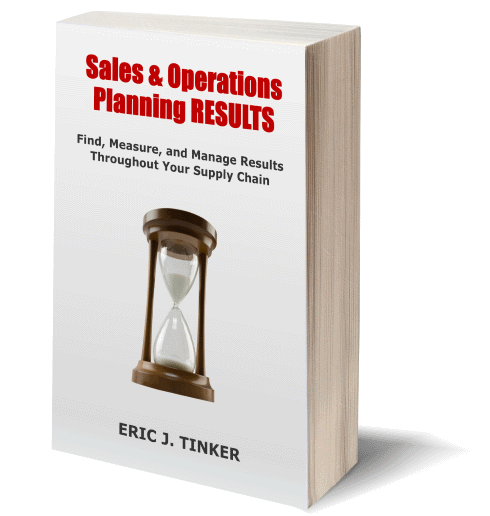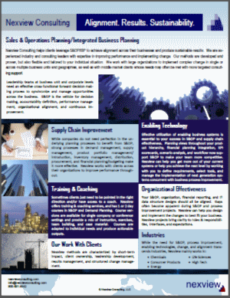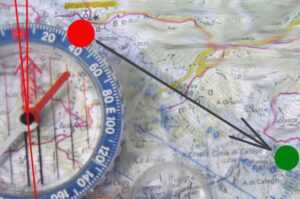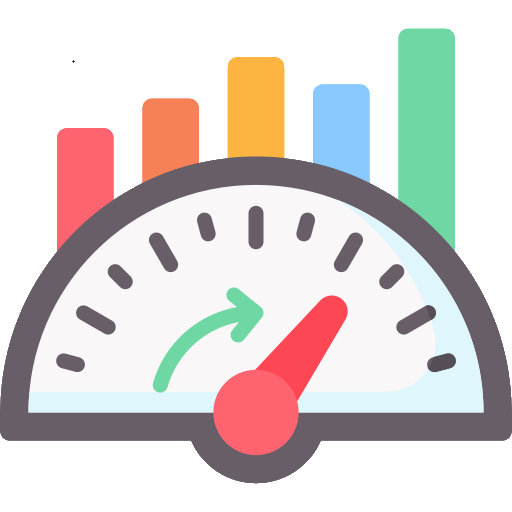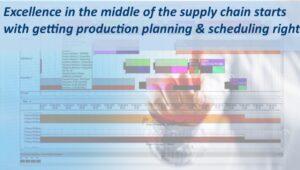
Ideas for when demand exceeds supply

During the post covid recovery period, most of our clients and companies in general have been operating in constrained environments. While things have been easing up in recent months, we know that times change and the lessons will add capabilities to beat the competition.
While supply constraints are certainly better for the company than a lack of demand (i.e., excess capacity and likely downsizing), the strain on employees and trading partner relationships is stressful in the day-to-day reality. We’ve seen the following symptoms increase across our client base:
- Last minute demand changes with complete disregard for whatever frozen period rules may have been in-place
- Backlogs growing and then questions about “Are the orders real?”
- Make-to-stock models being forced into make-to-order
- S&OP discussions degenerating even more into this month/next month conversations
- Decisions made outside of the S&OP process
- A lack of customer segmentation rules causing confusion and frustration and finger-pointing throughout the organization
- Premium freight rising
- Supplier issues
- Increasing lead times
To address the above, we have been emphasizing the following practices in our S&OP and interfacing process work to adapt and improve:
Modifications to Demand Planning
It’s easy to point fingers here when the supply side gets strained, the gaps become more visible and acute. Companies can’t get away with it anymore.
Improved Sales Input to the Demand Plan and Active Management of the Backlog
For those needing more structure in their process, start earlier in the monthly cycle, at least 2 weeks before the Demand Review. Each region/org group within the Sales structure needs a pre-meeting before going into their Demand Review. Your Demand Manager(s) needs to help the commercial leaders with process here and focus them on the items that don’t lend themselves to the statistical analysis. We look to build these meetings into already-existing “Account Planning-type” meetings if possible (i.e., don’t add more meetings!) We will need to leverage a Sales meeting structure for sales forecast input and ensuring the backlog is real demand. We know in times of allocation, customers place orders for 2, when they only intend on buying 1.
Visibility of Last Month’s Constrained Demand Plan in Demand Review
What! Discussing a constrained plan at this point in the S&OP process? You won’t find that in any text book (except mine to come, please stay tuned!). Yes, we still produce an unconstrained plan – we can’t lose sight of that, but give the Sales team some credit, they remember you shorting them in prior months, and they’ll get frustrated (and disengage) being in the same conversation each month. We still run unconstrained demand through supply planning, but we’re aware in Demand Review that the ask may not happen. Put a line on the plan for each section showing last month’s Constrained Demand Plan.
Strengthen the Feedback Loop Back to Sales After the S&OP Cycle
When the Sales team is being shorted by constraints, they need clear communication on their allocations once the S&OP cycle has been completed. This means disaggregated in views that Sales understands (typically by region and customer), not the business unit/product family view that came
out of S&OP. Sales needs to be able to communicate to customers on what they will actually get. Firms with weak IT/reporting (spreadsheets) will struggle with this and there will be confusion and frustration as to who got allocated what.
Review and Renewed Agreement on the Frozen Period AND Rules for Violating
Remember the frozen period for S&OP is driven primarily by fulfillment lead time. MTO and MTS have different combinations of procurement, manufacturing, and pick/pack/ship components. Most companies have a mix of MTS and MTO (either by choice or not when in constrained times). We generally advise against multiple frozen periods by product family depending on planning
model, it becomes too unwieldy to manage and isn’t really feasible for the S&OP meeting discussion. Pick the frozen period that is the best overall fit. Freeze the plans to the extent possible (see below) and when the actuals come in, the differences just become variance to plan.
Establish Rules for Breaking the Frozen Period
As S&OP and planning outside of lead time become better, fire-fighting goes down, right? Yes, but frozen periods have and always will be violated, we just need to manage that better in constrained times. Consider the following phrases that are valid and important, but the lines of consistent interpretation and practicality are often murky.
- “Our competitive advantage is our flexibility.”
- “We need to put our customers first.”
- “We are losing share to competitors.”
- “The market is changing and we could miss a huge opportunity.”
- “Maybe Operations can do this, I need to ask.”
Take these very valid phrases (or ones that make sense for your business) and put some guardrails around them to align your commercial and supply teams on what is achievable that will strain the organization, but not break it. These guardrails are part of your customer segmentation model, which
in our experience still mostly resides in the heads of leaders rather than actually written down somewhere so the organization can use it. A real customer segmentation process is foundational.
There should be a weekly tactical meeting structure below the S&OP layer that manages short-term order and fulfillment integration that is governed by customer segmentation policies.
The Obvious Ones for Increasing Capacity
I’ll just list a couple others at the risk of pointing out the obvious.
- Throughput improvements in the plant(s) – I did some of this earlier in my career before Nexview, and have friends who’ve built consulting firms on just this. Don’t count this out, most plants can do many seemingly obvious things before adding capital and people. Managed KPIs and real
meetings are a good way to improve management discipline. - Resources – yeah – capital and people, will just throw the obvious one in, but maybe it is time to face the music. This is the foundation of realizing growth. Use S&OP to plan it properly with visibility over several months.
Measure the Symptoms
The above suggestions are for addressing the root causes, which is good, but we need to measure the symptoms to see the effect. We’re still in many companies that don’t manage KPIs or the right KPIs. While a much bigger topic, I’ll emphasize the ones related to the discussion in this article.
- Ratio of Unconstrained Demand to Constrained (the Demand in the final monthly plan)
- No. of Changes Inside the Frozen Period (are these bad behavior or did we follow the rules?)
- Premium Freight – We love drawing charts in assessments that show the $ here spent on C customers, we usually find this which points to a lack of segmentation and service rules
- Lead Time – Especially critical in MTO situations, tactical visibility and focus here will lead to other good discussions and hopefully action
Parting Thoughts
I will just emphasize two of my favorite analogies that while perhaps common are none-the-less spot on.
- Always remember that it’s a journey of continuous improvement, and a circular cycle of improve the process à measure à improve the process (along with org and technology).
- You don’t have to be perfect, you just have to be better than the other guy, outrun the other guy, not the bear
You may also like
Nexview Consulting

We are a management consulting firm that specializes in Sales & Operations Planning and Supply Chain improvement. We leverage S&OP to be the platform for continuous improvement and profitability within client organizations. We also work with clients to improve organizational performance, structure, and enabling information technology. Consulting methods promote sustainability of performance improving behaviors, tangible results, and development of client team members. Our consultants are highly experienced business and consulting leaders with track records of delivering results for clients across the world, typically with larger well-known consulting firms. We are based in the Boston area, but travel worldwide to conduct training seminars, speak at conferences, and work with clients on high-impact, performance improving initiatives.
See also
Contact us about guiding your process
Contact us about guiding your process
© Nexview Consulting, LLC ® | Terms & Conditions, Privacy

